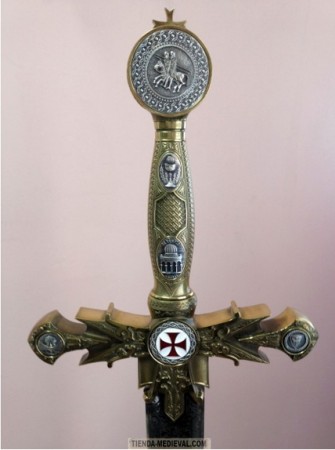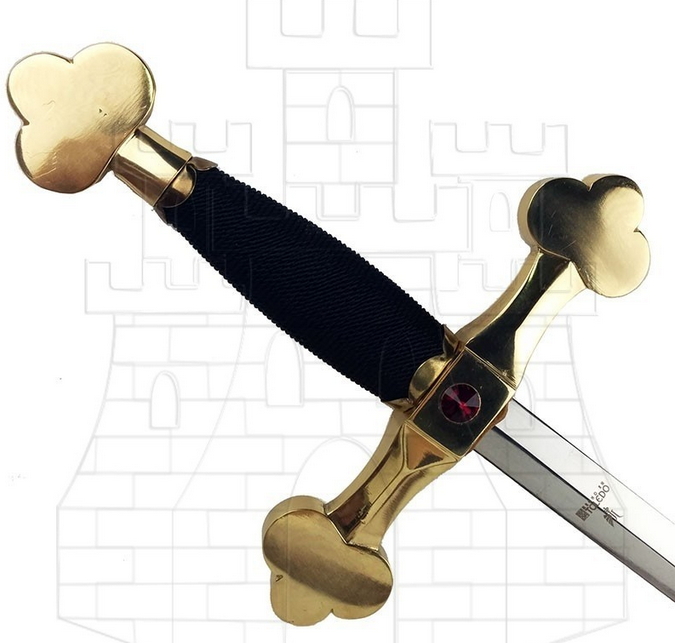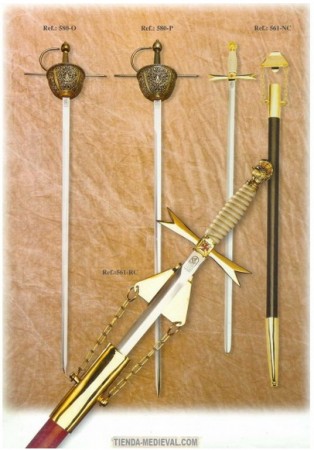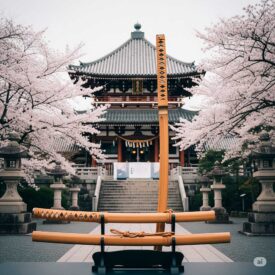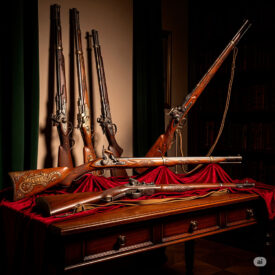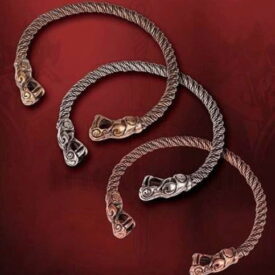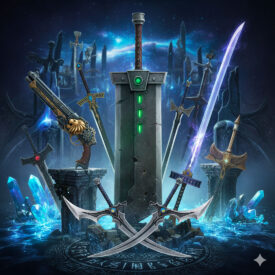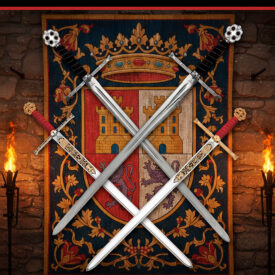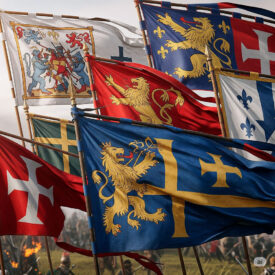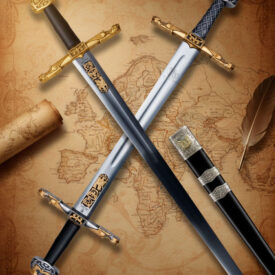Swords, swords, objects with an undeniable presence in human history, transcend their function as weapons to become powerful symbols in ceremonies and rituals. If you have ever wondered about the deep meaning behind a “ceremonial sword,” you are in the right place. This article will explore their rich symbolism, their various manifestations, and their importance in different traditions, from antiquity to the present day.
What Are Ceremonial Swords and Why Are They Important?
At their core, a ceremonial sword is a highly symbolic object used in religious, ritual, or institutional contexts. Unlike swords designed for combat, their main purpose is not battle, but the representation of values, hierarchies, and deep commitments. Historically, these swords have represented such fundamental concepts as faith, spiritual protection, and the transition to a new stage, often adulthood, within a community.
Ceremonial swords are particular swords that serve as symbols representing a traditional and historical group or institution. They are used in private gatherings when members of that specific group come together and are a sign of pride and distinction, especially during ceremonies or special galas. Beyond their practical use in combat, the sword in general embodies honor, courage, and dignity. It is an insignia of power and authority, and is associated with justice, capable of discerning between good and evil and punishing guilt.
They generally have their own scabbard so they can be stored inside and carried with the appropriate uniform or ceremonial attire. The scabbard not only protects the blade, but is also an integral part of the sword’s aesthetics and symbolism, often adorned with engravings or materials that complement the design of the blade and hilt.
The Deep Symbolism of the Sword
The sword is not just an object; it is a universal archetype with multiple layers of meaning that have resonated across cultures and eras. Its shape, its shine, and its symbolic function make it a powerful emblem:
- Freedom and Strength: In its broadest sense, the sword is an emblem of freedom and strength. It represents the ability to act, to defend oneself, and to forge one’s own destiny. Its presence evokes the courage needed to face challenges and the determination to overcome obstacles.
- Power and Protection: The sword represents power, authority, royalty, leadership, and vigilance. It is the attribute of kings and warriors, symbolizing their ability to rule and protect their people. In many cultures, swords were believed to possess protective powers, capable of warding off evil and safeguarding those who carried them.
- Discernment and Truth: On a metaphysical level, it symbolizes penetrating intellect, spiritual decision, and the inviolability of the sacred. It is the tool that separates body from soul, heaven from earth, truth from falsehood. In traditions such as Buddhism, it is related to discernment that cuts through ignorance, and in Chinese tradition, to mental sharpness that penetrates illusion.
- Dual Aspect: The sword has an inherent duality: it is constructive (establishing peace and justice through law and order) and destructive (applied to ignorance, malice, and tyranny). Its two edges, in some interpretations, represent the rights and duties that every individual must balance to live in harmony.
- Purification: Associated with fire and flame because of its shine and brilliance, the sword also symbolizes purification. Fire is a transformative element, and the sword, like the flame, has the ability to consume the impure to reveal the essential. The golden sword, for example, is a symbol of supreme spiritualization, of the purification of the soul.
- Unity in Duality: A double-edged sword can symbolize opposing but complementary forces that, when united, form a unity. Its cross shape, where the blade and guard meet, represents the conjunction of elements and the internal coherence needed for integrity.
- The Divine Word: In the Middle Ages, it was primarily considered a symbol of the spirit or the word of God. The divine word, like the sword, has the power to cut through falsehood and reveal truth, to judge and to create.
Types of Ceremonial Swords: Variety and Purpose
Ceremonial swords come in various forms, each with its own charm, meaning, and specific purpose. Although all share a symbolic role, their designs and the context of their use can vary greatly.
Traditional Ceremonial Swords
Within this category are swords that evoke history and cultural heritage. These are pieces that often replicate ancient designs or have been passed down through generations.
- Period Swords or Historical Replicas: These are meticulous reproductions of swords that existed in specific historical periods. They are often used in ceremonies that seek to recreate or honor past traditions. Their elaborate details, which may include religious engravings, heraldic shields, or cultural motifs, make them pieces of great aesthetic and symbolic value. They are popular among collectors, history enthusiasts, and groups that practice historical reenactment.
- Family or Heirloom Swords: These swords are perhaps the most laden with sentimental and religious value. They have been passed down from generation to generation, accumulating stories and the spirit of those who owned them. Their importance lies less in their specific design and more in their lineage and the bond they establish with the family past. They are often used in rites of passage, such as weddings or inheritances, to symbolize continuity and connection with ancestors.
Modern and Themed Ceremonial Swords
In contrast to traditional ones, modern ceremonial swords incorporate contemporary techniques and designs, often with a focus on personalization and the expression of faith or individual or group identity.
- Contemporary Designs: These swords are crafted with current materials and techniques, allowing greater flexibility in design. They can be minimalist or intricate, but always reflect a more modern aesthetic. They are often personalized with elements that reflect faith, family history, or the values of a modern institution.
- Themed or Religious Swords: Adorned with specific religious motifs or Christian symbols, such as crosses, chalices, or engraved biblical quotes. These swords are explicitly designed for use in religious ceremonies, such as baptisms, confirmations, or first communions, where the symbolism of faith is paramount.
Decorative Ceremonial Swords
Although all ceremonial swords have an aesthetic component, some are designed mainly for display and visual enhancement of a space or event.
- With Ornamental Details: These swords incorporate inlays of precious metals, gemstones, enamels, or complex metal decorations that enhance their aesthetic and symbolic value. They are true works of art displayed in showcases or on walls, serving as focal points and reminders of the values they represent.
- Swords with Special Scabbards: Designed with special scabbards that may have engravings or additional details, complementing their ceremonial meaning. The scabbard is not just a case, but an extension of the sword itself, often with a design as elaborate as the blade.
Swords for Special Events: Weddings and First Communions
Among ceremonial swords, we also have swords for weddings, on which the names of the celebrants and the date of the wedding ceremony can be inscribed. These swords have become an emotional keepsake of one of the most important days in a couple’s life, symbolizing union, mutual protection, and the beginning of a new stage. They are often replicas of historical swords, such as the Tizona or the Colada, adding a touch of nobility and tradition to the event.
And among the most in demand are swords for first communion, which can be given to both boys and girls, with the inscription of their name and the date of the First Communion ceremony. When it comes to first communion swords, size and design are key to making them suitable for a child or teenager, and they usually include religious ornamentation and the possibility of personalization with names or dates. These swords symbolize purity, faith, and the child’s spiritual commitment at a crucial moment in their religious life.
The Sword in Initiatic Orders and Secret Societies
The sword acquires an even deeper meaning in the context of initiatic orders and secret societies, where it is used in rites of passage to mark the individual’s progress and reinforce the organization’s principles.
Masonic Swords
In Freemasonry, swords are mandatory in certain ceremonies and symbolize the honor, courage, and dignity that should characterize the Mason. No one is considered invested with a hierarchy without having sworn an oath before the symbol of the sword, which underscores its role as a guarantor of the solemnity and commitment of the members.
There are two main types of Masonic swords, each with its own intricate symbolism:
- The Ordinary Sword: This sword is composed of several parts, each with a specific meaning:
- Hilt: Symbolizes the strength and firmness of the principles of equity and reason that should guide the Mason in life and work. It represents control over passions and adherence to justice.
- Crossguard: Represents the lodge and the factors of strength, firmness, and stability that support it. It is the point of union between the blade and the hilt, symbolizing coherence and balance.
- Double-Edged Blade: One edge represents the rights that every human being possesses, while the other symbolizes the duties to be fulfilled. This duality teaches the Mason to defend the weak against the strong and to embody the law based on pure reason and morality.
- Skull on the Hilt: Although it may seem somber, the skull allegorizes punishment for those who betray their oaths, reminding of the seriousness of Masonic commitments.
- Scabbard: Symbolizes discretion, a fundamental virtue in Masonry, teaching to keep the order’s secrets and to act with prudence.
- The Flaming Sword: Distinguished by its wavy blade, resembling flames. It is the true insignia of the Worshipful Master and a weapon for the Temple Guards, symbolizing security in their mission. The flame shape not only evokes purifying fire but also the light of knowledge and truth that the Master must radiate. Unlike the ordinary sword, it does not have a scabbard, indicating that science and virtue must always be available and imparted without restrictions, shining and spreading freely. Its lack of a scabbard can also symbolize constant vigilance and readiness to act in defense of Masonic principles.
The Templar Sword and the Royal Art
For the Templars, “boots and swords” were characteristic elements of their attire and their identity as warrior-monks. The ritual sword, together with the concept of knighthood, became deeply integrated into their identity. The Templar sword represented the authority and supernatural spiritual power of the Order, being an instrument both of defense of the faith and of inner purification.
The ideal of the Templar warrior-monk implied a constant struggle against the vices of the profane world, bringing light where there is none and seeking balance between the material and the spiritual. At the Master’s table, the sword is the main symbol of the strength that defends the brothers against external attacks and establishes internal order, embodying the chivalric ideal and the ability to destroy evil to preserve justice.
The symbolism of the sword in the Order of the Temple is also intertwined with the “Royal Art” or Alchemy. Here, the sword, or the fire/spirit it represents, fights against the “dragon” or “serpent” (the temptations and base instincts of human nature). This battle is known as the “labors of Hercules,” a series of trials for the aspiring adept seeking inner transformation. The sword becomes an “agent” with a double power: to wound and to heal, to destroy and to regenerate, to mortify and to resurrect, extracting the “seed” (the pure spirit) from the “matter” (the material body). This is vividly reflected in the legend of Saint George and the dragon, where the sword not only kills the beast but also gives rise to a red rose, symbol of new life, purity, and the victory of spirit over matter.
Practical and Technical Differences Among Ceremonial Swords
Although the main value of ceremonial swords lies in their symbolism, there are practical and technical differences that distinguish them and are crucial for their function and authenticity. These differences are manifested in the materials, craftsmanship, and finish.
- Materials: Ceremonial swords can be made from a variety of materials. Historical replicas and high-end swords often use quality steels (such as carbon steel or stainless steel) for the blade, which, although not intended for combat, must maintain their shape and shine. Hilts can be made of wood, bone, ivory, precious metals (silver, gold), or alloys, often wrapped in leather or silk. The most decorative swords may incorporate inlays of semi-precious stones, enamels, or filigree. The choice of material directly influences the weight, balance, and durability of the piece.
- Craftsmanship and Finish: The quality of craftsmanship is a key differentiator. A high-quality ceremonial sword will show impeccable polishing on the blade, precise and detailed engravings, and a perfect fit between all its components. Swords intended for initiatic orders, for example, require precision in the engraved symbols that is fundamental to their ritual meaning. In contrast, a purely decorative sword may prioritize shine and ornamentation over structural solidity.
- Weight and Balance: Although not used for combat, the weight and balance of a ceremonial sword are important for handling during rituals. A well-balanced sword feels comfortable in the hand and allows fluid movements, which is essential in ceremonies where the sword is held or displayed for extended periods. Display swords, on the other hand, may be heavier or less optimally balanced, as their purpose is static.
- Personalization: The possibility of personalization is an important technical feature for many ceremonial swords. This may include laser or hand engraving of names, dates, mottos, or specific symbols on the blade or hilt. This technique adds a unique and irreplaceable value to the piece, transforming it from a generic object into a personal or institutional treasure.
Ideal Use Scenarios for Each Type of Ceremonial Sword
The choice of a ceremonial sword is intrinsically linked to the context in which it will be used. Each type of sword is designed to complement and enhance the solemnity and meaning of a specific event or tradition.
- Initiatic and Fraternal Orders (Masonic, Templar): Swords specifically designed for these orders are essential in their initiation rituals, degree advancements, and formal meetings. The Flaming Sword, for example, is indispensable for the Worshipful Master Mason, while swords with Templar symbolism are fundamental in ceremonies of modern Knights Templar. Their use reinforces oaths, hierarchy, and the values shared by the members.
- Religious Ceremonies (First Communions, Confirmations): First Communion swords, often engraved with the child’s name and date, are meaningful gifts symbolizing faith and commitment. They are displayed during the ceremony and then kept as a cherished keepsake. Their size and design are adapted to be appropriate for children, with a focus on religious ornamentation.
- Weddings and Anniversaries: Wedding swords, personalized with the names of the couple and the date of the union, are used in some weddings as a symbol of union, protection, and the strength of the new bond. They may be part of the decoration or used in a small symbolic ritual, such as cutting the cake.
- Historical Events and Reenactments: Period sword replicas are essential for historical reenactment groups, museums, and cultural events that seek to revive or educate about past periods. Although their use is ceremonial, historical accuracy in their design is paramount to maintain the authenticity of the event.
- Display and Collecting: Many ceremonial swords, especially the most ornate or historically significant, are primarily intended for display. They are shown in homes, offices, or museums as works of art, status symbols, or reminders of heritage and values.
- Military and State Ceremonies: Although not detailed here, it is common for armies and governments to use ceremonial swords (dress sabers, investiture swords) in parades, graduation ceremonies, investitures of dignitaries, or credential presentations. These swords symbolize honor, service, and the authority of the nation.
Comparison of Considerations When Choosing a Ceremonial Sword
Choosing a ceremonial sword goes beyond mere aesthetics; it involves considering various factors that will impact its meaning, durability, and suitability for its purpose. It is not about practical advantages or disadvantages, but about the key considerations that will guide an informed decision.
- Historical Authenticity vs. Modern Design:
- Historical Authenticity: Ideal for collectors, reenactors, or those seeking a direct connection with a specific period or tradition. These swords prioritize fidelity to the original design, materials, and manufacturing techniques of the era. Their value lies in their historical accuracy.
- Modern Design: Offers greater flexibility in personalization and aesthetics. Allows the incorporation of contemporary symbols or adapts the sword to a more current taste, ideal for personalized gifts or for institutions seeking a unique and distinctive symbol without strict historical ties.
- Quality of Materials and Craftsmanship:
- High-Quality Materials: Carbon steel, precious metals, fine woods. They guarantee durability, superior finish, and greater intrinsic value. They are essential for swords that will be used frequently or displayed as works of art.
- Detailed Craftsmanship: Precise engravings, impeccable polishing, perfect assembly. Reflects the dedication and knowledge of the craftsman, elevating the sword to a work of art and ensuring that the symbols are clear and exact.
- Level of Personalization:
- Standard Swords: More accessible and may be suitable for general uses or as a starting point.
- Personalized Swords: Allow engraving of names, dates, mottos, or specific symbols. This adds sentimental value and deep meaning, transforming the sword into a unique and irreplaceable object, ideal for commemorative gifts or for members of a specific order.
- Purpose of Use (Ritual vs. Display):
- Ritual Use: Swords intended for active ceremonies should be manageable, with adequate balance and robust construction to withstand repeated use. Safety and comfort in handling are priorities.
- Display swords may be heavier or more delicate, with a focus on aesthetics and ornamental details. Their purpose is to be admired, not constantly handled.
- Maintenance and Care:
- Carbon Steel: Requires more rigorous maintenance (regular oiling) to prevent rust.
- Stainless Steel: More resistant to corrosion, requires less maintenance, making it a practical option for those who prefer convenience.
Purchase and Use Recommendations According to User Profile
Choosing the right ceremonial sword largely depends on the user’s profile and needs. Here are some recommendations:
- For the Collector and History Enthusiast:
- Recommendation: Opt for high-fidelity historical replicas, made with authentic materials and traditional techniques. Look for swords with documentation certifying their origin or the accuracy of their replica.
- Use: Mainly for display in showcases, personal museums, or as centerpieces in collections. They can be used in historical reenactments if their construction allows and with appropriate safety measures.
- For the Member of an Initiatic Order or Fraternal Society:
- Recommendation: Acquire swords specifically designed for your order, ensuring they meet the established symbolic and design requirements. The precision of the engravings and the quality of the materials are fundamental for the respect of the ritual.
- Use: Exclusively in ceremonies and rituals of the order. Care and maintenance must be constant to preserve their condition and meaning.
- For Those Seeking a Meaningful Gift (Weddings, Communions):
- Recommendation: Choose customizable swords with engravings of names, dates, or special messages. Prioritize designs that evoke purity, union, or faith, such as First Communion or wedding swords. Presentation (box, stand) is also key.
- Use: As a keepsake and symbol of an important event. They will be displayed at home as a family treasure, passing on their meaning to future generations.
- For the Occasional Adventurer or Fantasy Enthusiast:
- Recommendation: You can opt for swords with more modern or themed designs that suit your tastes. Durability and an affordable price may be important factors if you plan to use them at role-playing events or as part of a costume.
- Use: At themed events, conventions, or as decorative elements in personal spaces that reflect your interests.
Caring for and Maintaining Ceremonial Swords
For a ceremonial sword to maintain its splendor and symbolic value over time, it is essential to dedicate proper care to it. Even if not used in combat, they are exposed to factors such as humidity, dust, and handling that can deteriorate them.
- Regular Cleaning: Clean the blade with a soft, dry cloth after each handling to remove fingerprints and dirt. For carbon steel blades, it is crucial to apply a thin layer of mineral oil or specific gun oil to prevent rust.
- Proper Storage: Store the sword in a dry place with a stable temperature, away from direct sunlight and sources of moisture. Wooden or leather scabbards can help protect it, but make sure they are clean and dry before storing the sword.
- Careful Handling: Always handle the sword by the hilt. Avoid touching the blade directly with bare hands, as skin oils and acidity can cause stains or corrosion.
- Periodic Inspection: Regularly check the sword for signs of rust, wear, or loose parts. Preventive maintenance can avoid major damage in the long term.
Ceremonial swords are much more than physical objects. They are vessels of meaning, bridges between the material and the spiritual, and living symbols of a constant quest for perfection and truth. From ancient rituals to modern ceremonies, these swords continue to remind us of the importance of honor, discipline, justice, and the tireless struggle against ignorance and selfishness on our path to enlightenment. Their silent presence invites us to reflect on our own essence and our role in the great tapestry of existence. If you are looking for a piece that embodies these values and is a testament to history and tradition, we invite you to explore a wide selection of ceremonial swords, including Masonic and Templar models, as well as options for weddings and communions. You can find high-quality swords for every occasion and purpose, which will become a lasting legacy.

